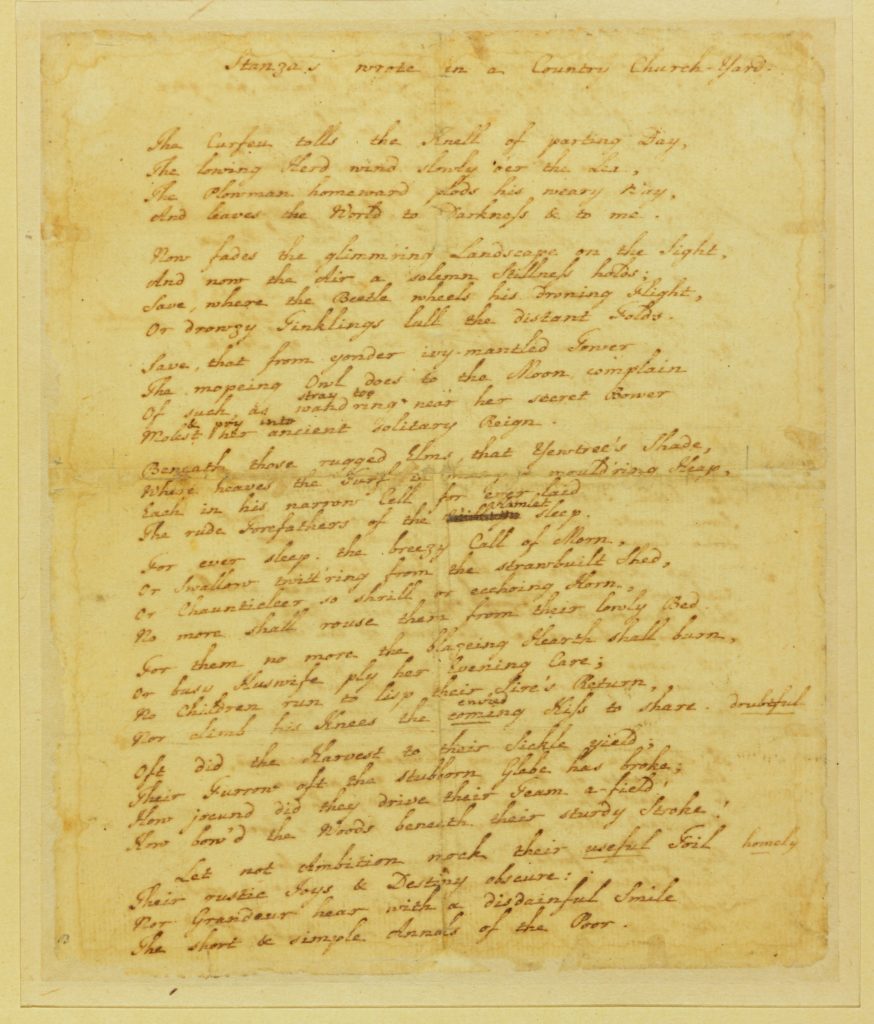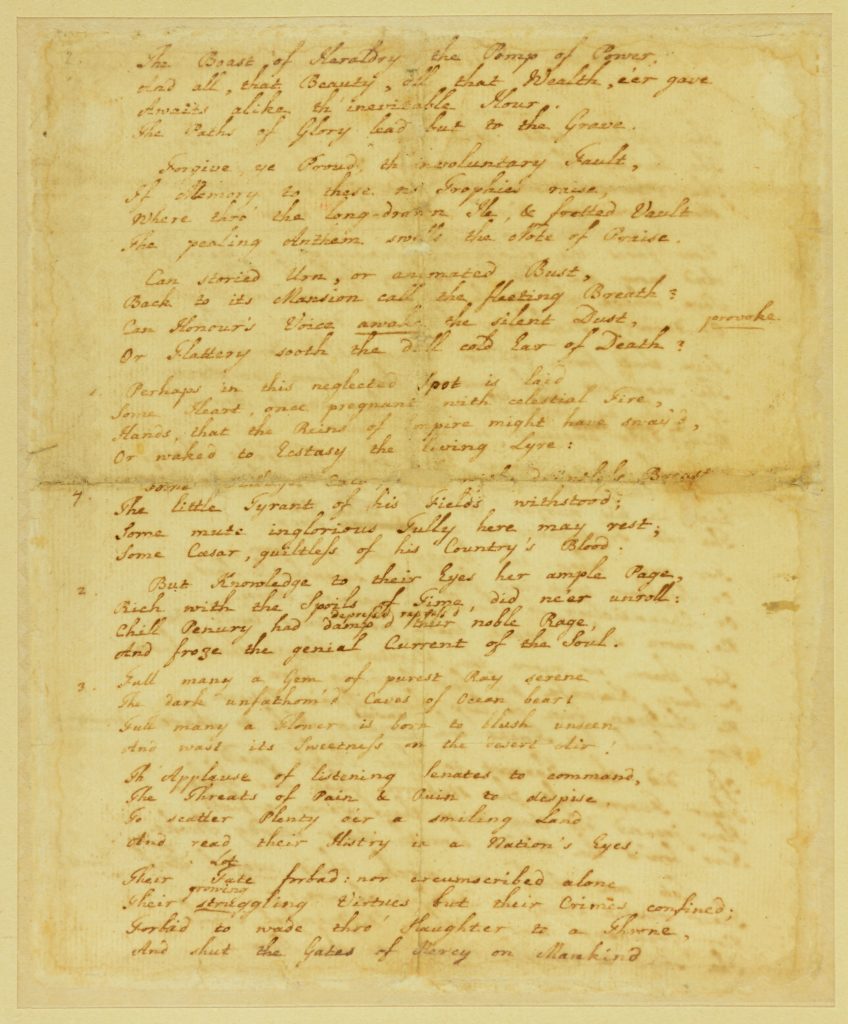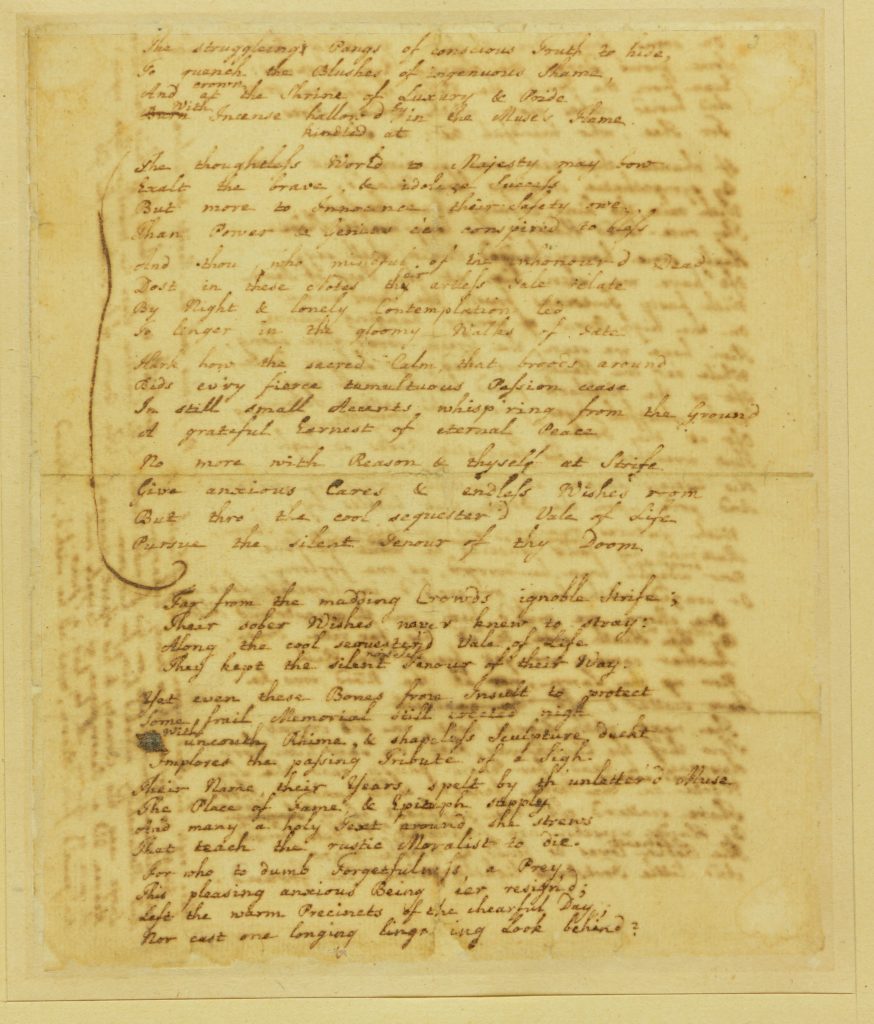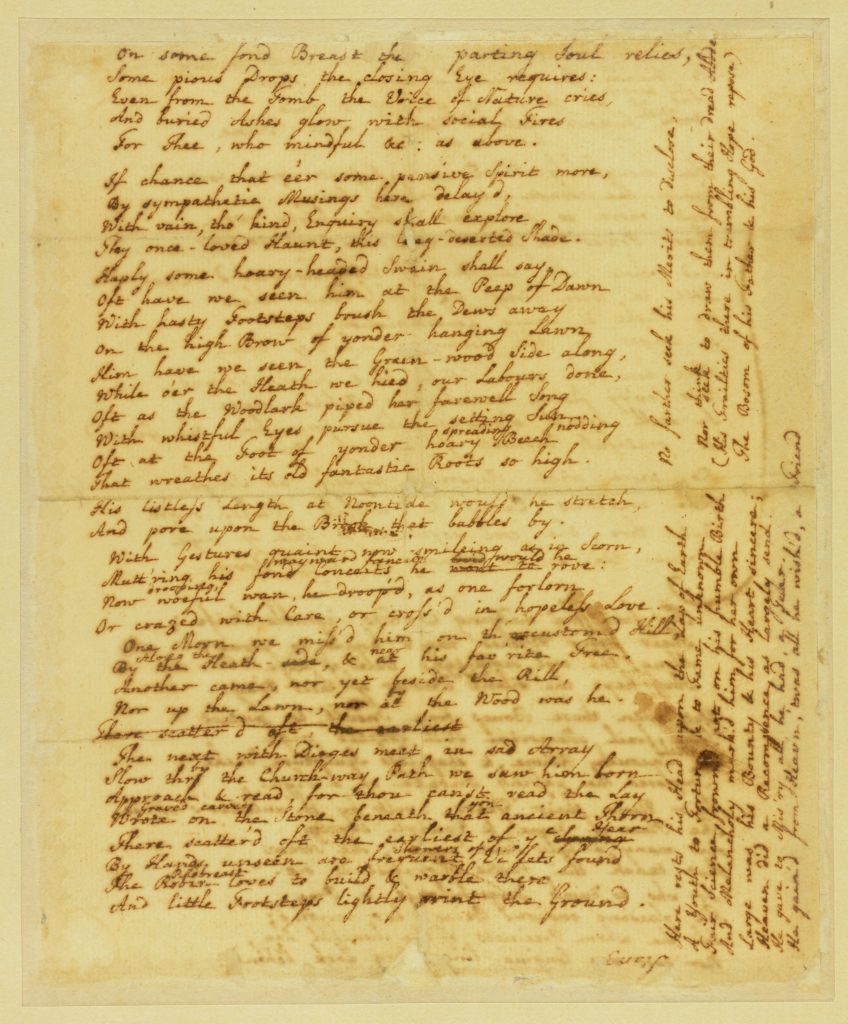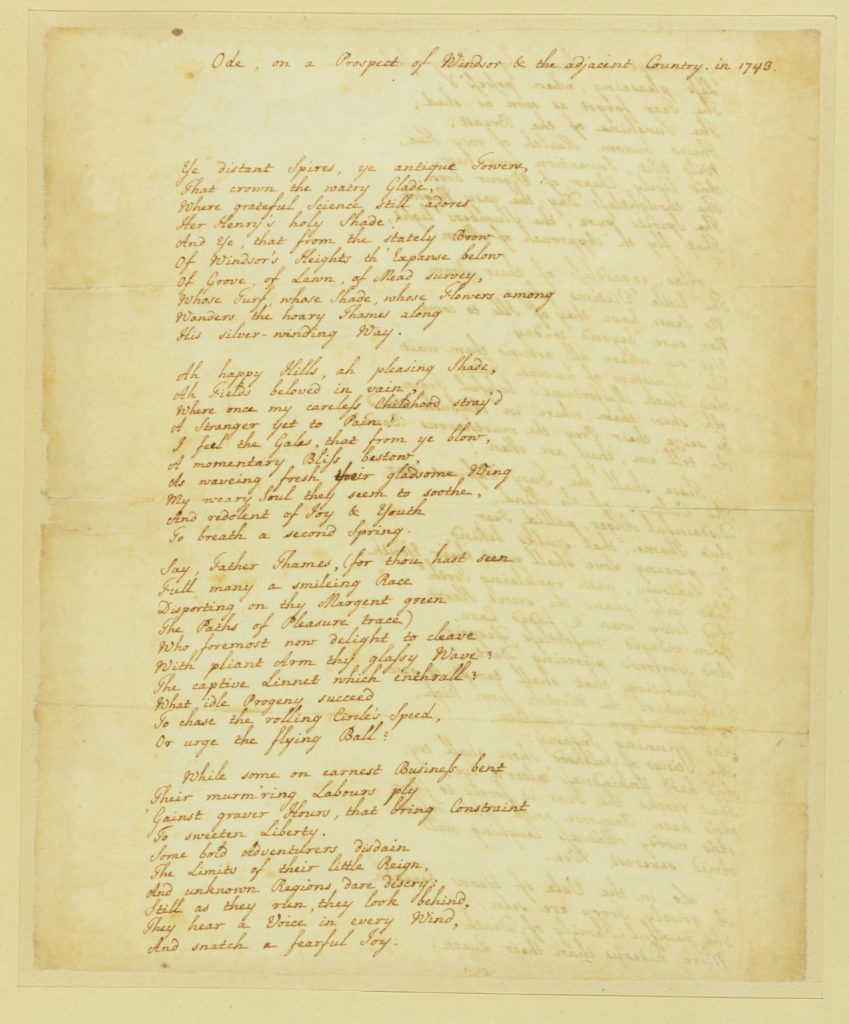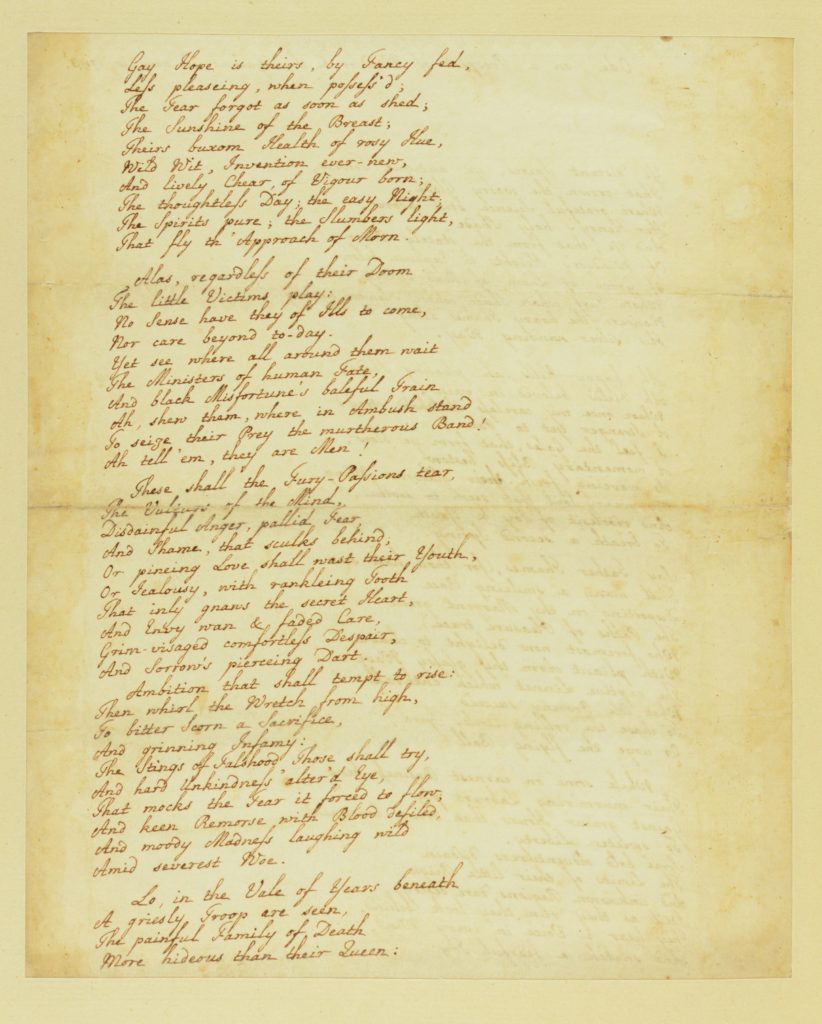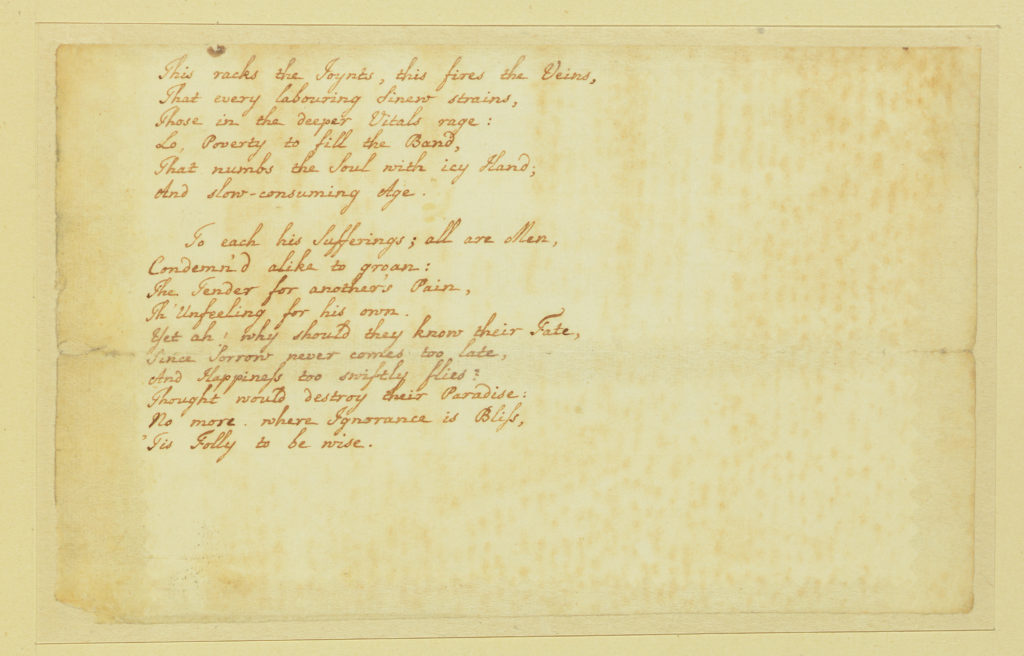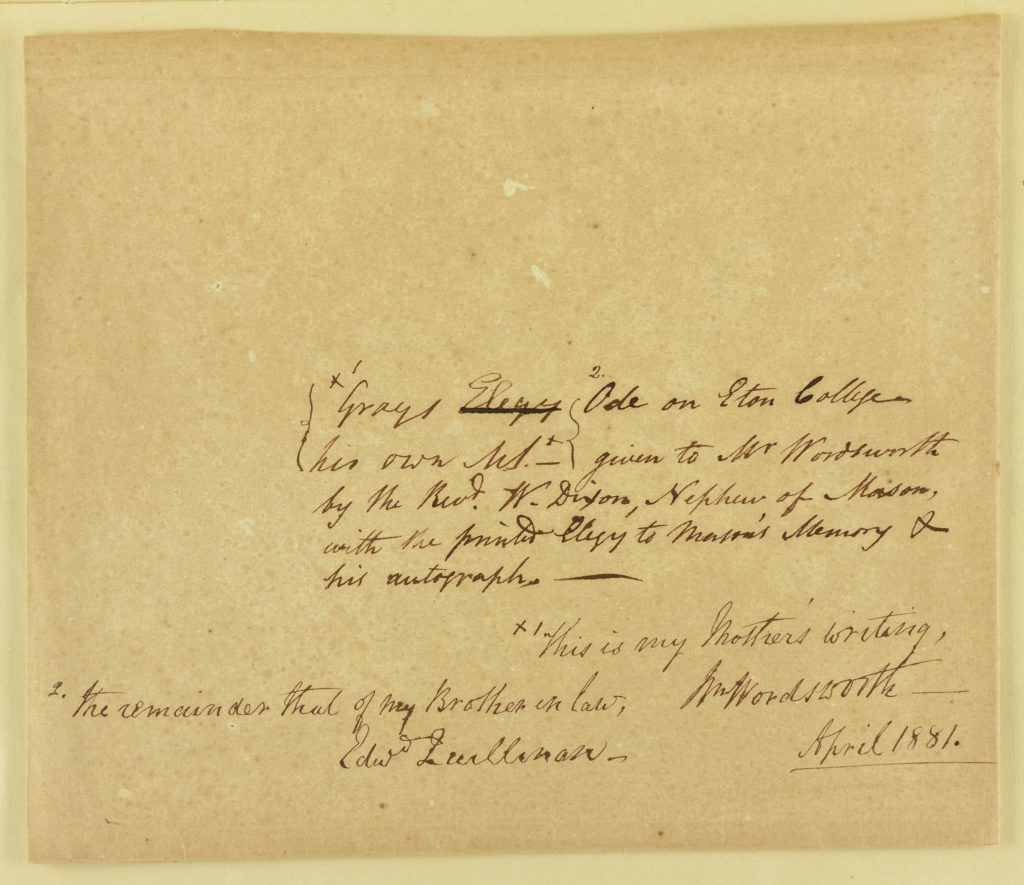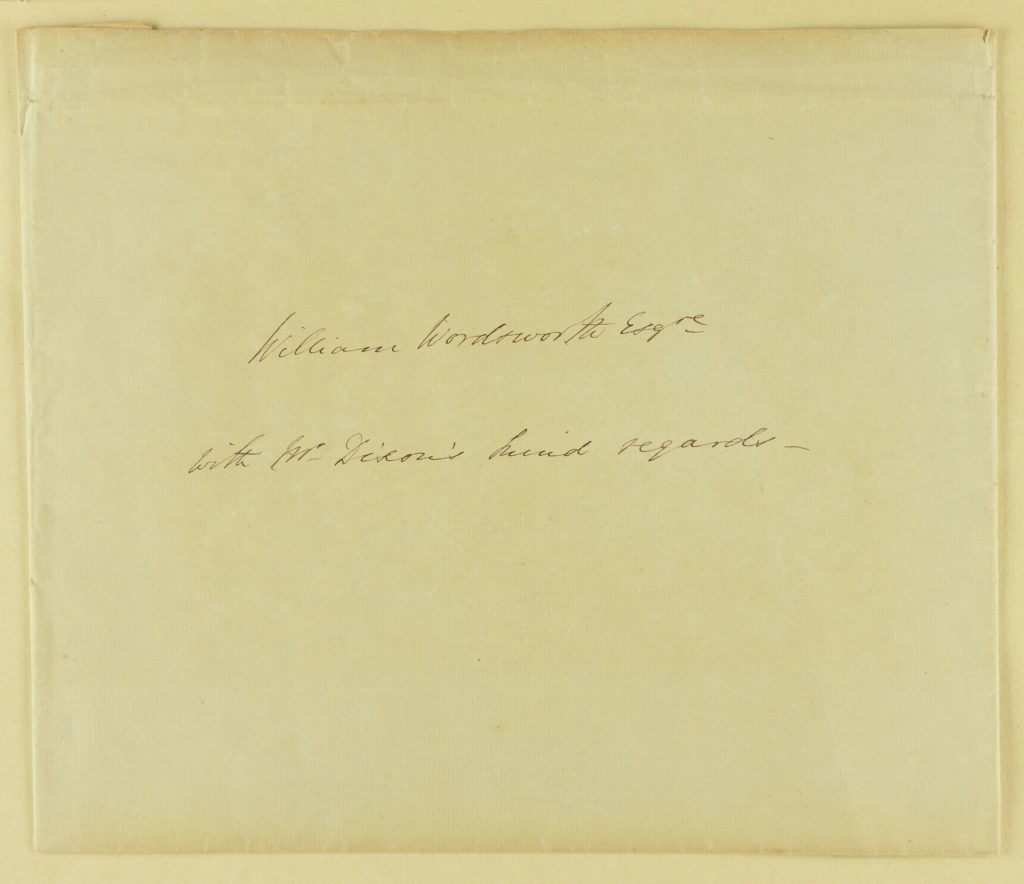‘Stanzas wrote in a Country Church-yard’ (1747-1750)
‘Elegy Written in a Country Churchyard’ had a profound effect on English poetry. Eton’s manuscript, Gray’s autograph draft, reveals uniquely the process of its composition.
By 1746 Gray was writing a Horatian ode in twenty-two stanzas. Creases in the manuscript, formed after this first draft and obscuring some of his original lines, indicate that it was folded and stored, possibly in his pocket-book. By 1750 Gray had returned to his draft and removed the final four stanzas, replacing them with the ten stanzas of its final form and taking care to avoid the creases.
This manuscript preserves a pivotal moment in Gray’s poetry. His education at Eton had fostered an appreciation for classical poetry which he had expressed in his own works. His subsequent draft, raw and personal, seems to prefigure elements of the Romantic movement, which would reach its height at the end of the century.
Gray replaced his philosophical conclusion with a closer study of the ‘rustic’ inhabitants, and of the poet himself. More than acquaintance or even experience, it is sensibility that connects them: a shared sensitivity and depth of feeling. That anyone with the gift of sensibility could be a ‘mute Milton’, whether they had the means to write or even to read, was a principle that some of the Romantics would carry forward into their own poetry.
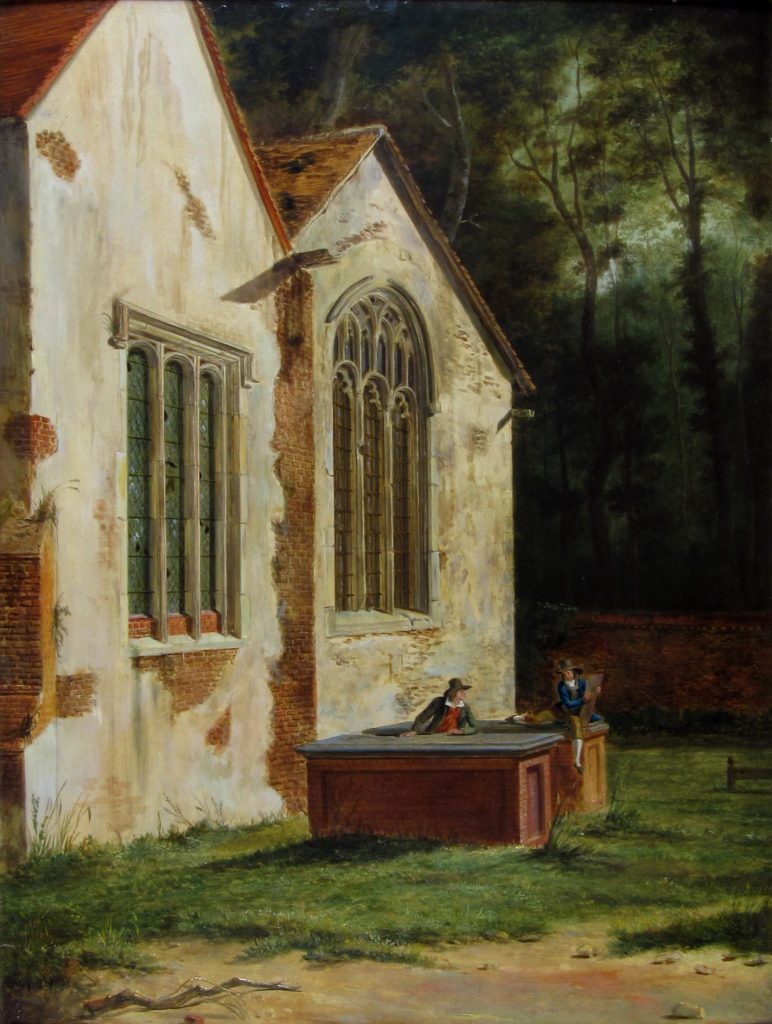
Hendrik Frans de Cort (1742-1810), The Tomb of Gray, Stoke Pogis [sic], Bucks, c.1797, oil on wood [FDA-P.102-2010]
‘Ode, on a Prospect of Windsor and the adjacent Country, in 1743’ (1743)
‘Ode on a Distant Prospect of Eton College’ was written in the wake of the end of the Quadruple Alliance. In 1741 Gray became estranged for a time from Horace Walpole; a year later, Richard West died. The 25-year-old Gray found that his blissful years at Eton were already a distant prospect indeed.
Gray spent the summer of 1742 with his aunt and uncle at Stoke Poges. From there he could look over the Thames to Eton College, three miles away.
This autograph manuscript is a fair copy of the poem, probably copied by Gray in 1743 to give to a friend. It was subsequently given to William Wordsworth by the nephew of the poet William Mason, Gray’s biographer and the executor of his will. In his influential preface to Lyrical Ballads Wordsworth was critical of Gray’s ‘poetic diction’, preferring to use the more everyday ‘language of men’. Nevertheless, he read Gray’s poetry and prose and reflected on it thoroughly. The poem’s sincerity and strength of feeling is likely to have lingered with Wordsworth. In ‘Lines Composed a Few Miles Above Tintern Abbey’ he conveys the melancholy, though sweeter and more relenting than Gray’s, provoked by a return to a setting of his ‘boyish days’ to which he, too, cannot return.
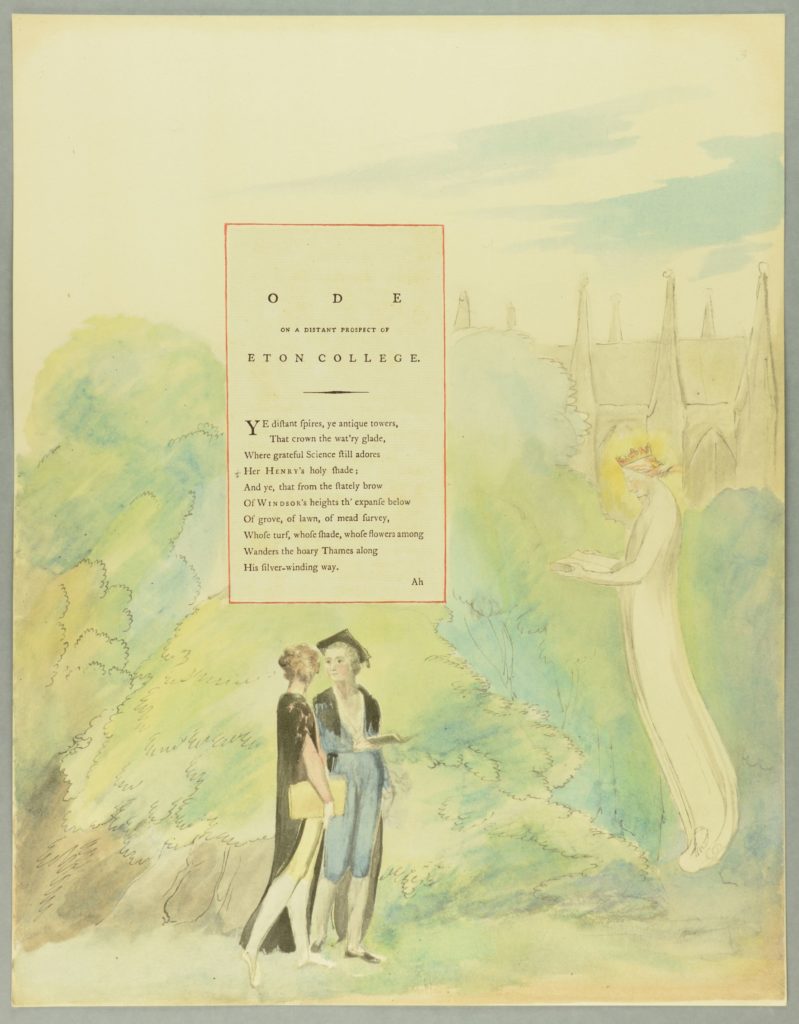
William Blake, ‘Ode on a distant prospect of Eton College’ in William Blake’s water-colour designs for the poems of Mr Gray, London: Trianon Press, 1972 [Lt.1.09] Reproduced with the kind permission of the University of California


